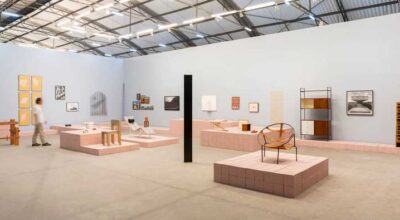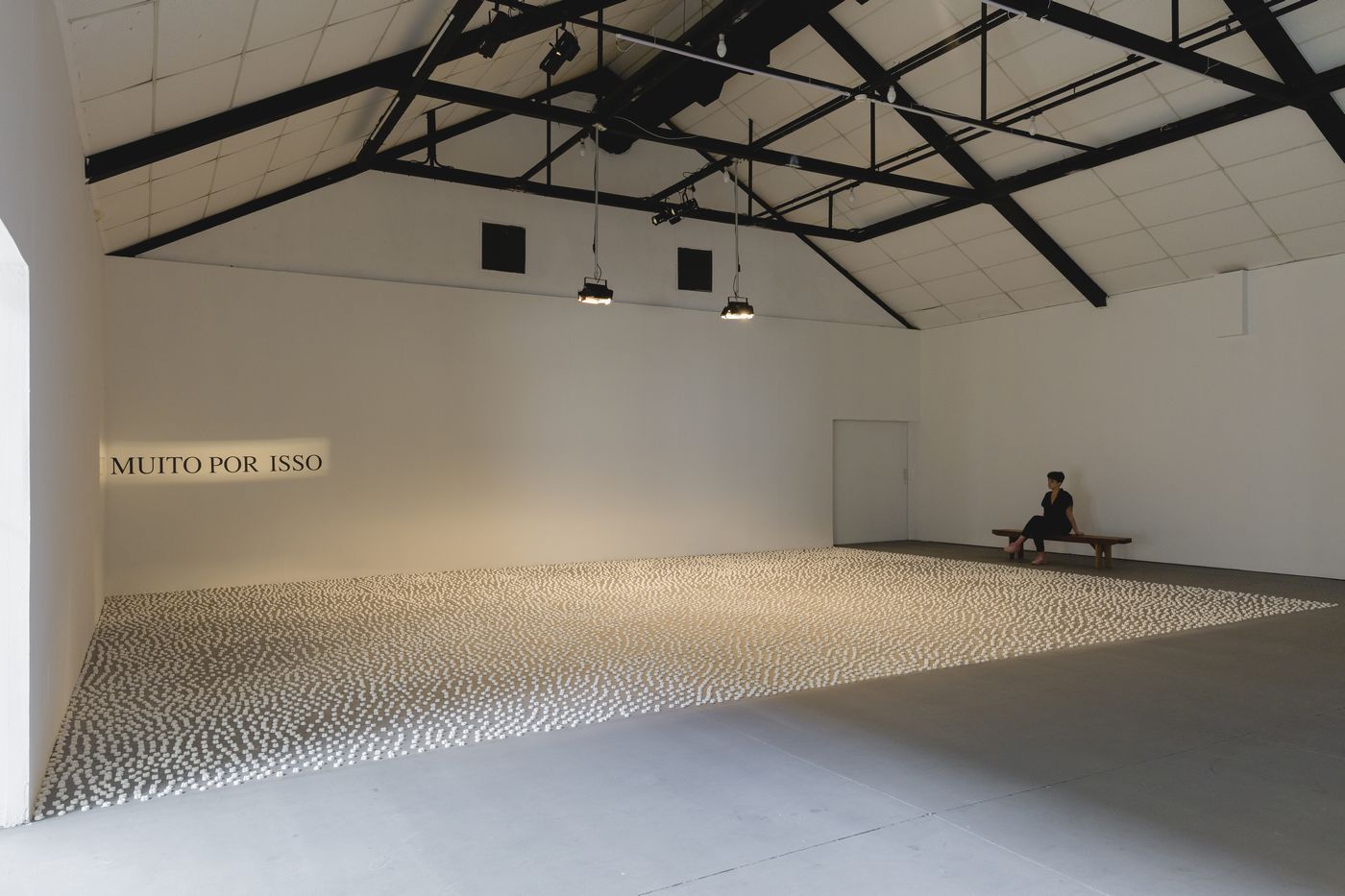
FRAGRANT BODIES. AN INTERVIEW WITH KAROLA BRAGA
We are not isolated, nor is anything else. If we pay close attention to what life is asking of us in the year 2023, we realize that we are at a crucial moment in which we decide what we will take with ourselves as digital technologies, such as AI, among others, advance.
Time is asking us to rethink our relationships and other ways of understanding and bonding. We must reassess clichés, old popular ideas, and prejudices to make deep connections with each other and think from our embodied being.
Heidegger once said, «Existence is taking care of oneself.» [1] And if we were to consider the olfactory realm as crucial to taking care of ourselves, we would listen inside and to what surrounds us, taking care of other living beings and their environment.
Smelling is a way of caring. The work of Brazilian artist Karola Braga shows care in its various forms: in the way it is elaborated and conceptualized, and in the way she creates an olfactory language through certain gestures. One instance is when she aims to create the scent of the lança-perfume [2] used at the Brazilian Carnival Ball. Another example is how she recreates the atmosphere of the Carnival Ball as it was. In this way, she shows the various poetic unfoldings in the olfactory realm.
We invite you to read this interview, where she narrates her process, and the surrounding efforts in olfactory research.
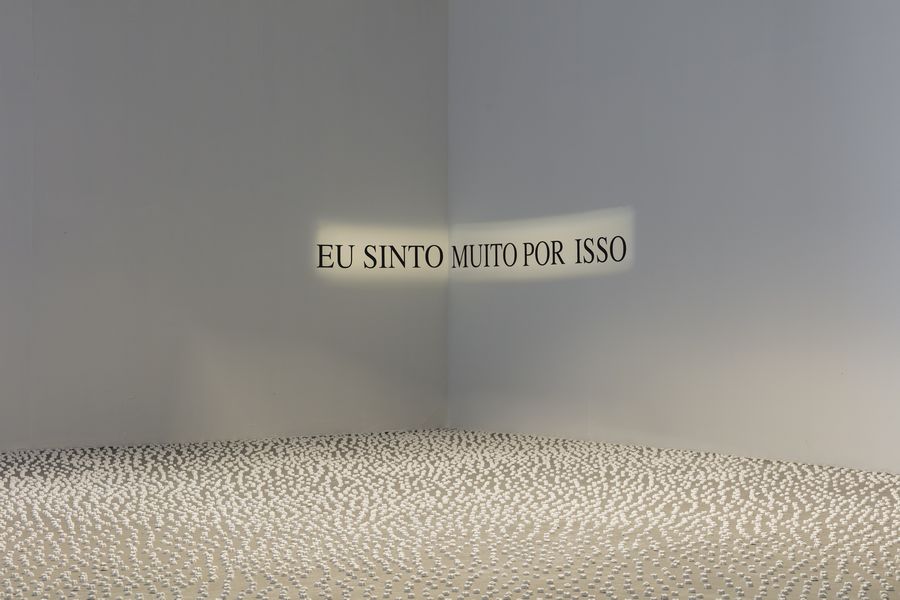
Lucía Montúfar: Tell us about yourself. How did you start your career in art and your olfactory research?
Karola Braga: I began my studies in New York, focusing on traditional art forms such as sculpture, painting, and printmaking. However, upon returning to São Paulo, I enrolled in a fine arts school that embraced a more conceptual approach to art. Throughout my artistic journey, I have maintained a deep fascination with the human body and its connection to space. At the school, I found myself drawn to exploring questions related to absence versus presence, memory versus oblivion, and the passage of time. These contemplations sparked my interest in finding alternative methods of occupying and engaging with space, leading me to embark on experiments involving smells.
The first work I created, centered around the concept of space, was a pirate radio station—an illegal venture for which I possessed the frequency number but lacked permission. This form of expression was a means of invading space. As people drove by in their cars on the street, if they happened to tune in to the close frequency I had set up, they would hear our audio instead.
This happened in a square here in São Paulo, known for its significance to the LGBTQ+ community—a popular site for protests and the fight for queer rights. The aim was to explore alternative ways of protesting and occupying that particular space. I draw a parallel between this work and smells because, as you pass through a place, the scent engulfs you without much choice. It is invisible yet undeniably present.

Another project I undertook was an exhibition comprising 71 days and 71 videos. It narrated the story of someone’s departure over that span of time, resembling a love story intertwined with a countdown to both the end of the exhibition and the departure itself. It functioned as a calendar of sorts. However, even the individuals working there did not have complete access to the entirety of the piece. Each day featured a different video, and there were some days when the exhibition was closed.
Thus, the work symbolized a yearning to grasp something intangible—an experience that remains elusive. It dealt with the frustration of attempting to capture something fleeting. Time passes, and we cannot halt its progress. And with smells, I constantly grapple with the transitory nature of experiences. I am acutely aware that they will eventually fade away.
Subsequently, I delved into working with smells in a more performative manner. I explored how perfumes could relate to identity, particularly my own, during the initial stages of my exploration. How could people associate a particular smell with me? How could I establish territories using scents, essentially crafting narratives? This approach differs significantly from performance or sound art in that it does not allow for the possibility of documentation. In the fascinating digital realm, the challenges are even greater.
When individuals encounter my work on platforms like Instagram or the web, they often express confusion, to which I respond, «Well, you can’t get the whole idea from the image. You need to feel it.» To truly comprehend and appreciate my work, one must be physically present, engaging with it through their bodies. Its essence depends on our presence. Yes, it will dissipate, and yes, it will evade capture, but that is precisely the point. The aim is to foster a certain kind of experience that people can relate to and form lasting memories of.
Another layer of my work involves exploring the cultural context of smells. I am fascinated by how people culturally relate to specific scents. While individuals have their own personal memories tied to smells, I am particularly intrigued by the collective memories of specific groups, countries, and regions associated with particular fragrances.
At present, I am in the process of creating the scent of the Carnaval Ball, utilizing perfumes from the last century that bear immense significance in Brazil’s history. By incorporating these scents, individuals can form connections based on their existing memories. However, it is crucial to acknowledge that this approach may not resonate in the same manner in Guatemala, for instance. While they would forge new memories with these smells, they may not align with the precise essence of what I am proposing.

LM: What is the process to materialize scents in an artistic context? Where does the idea come from, how do you materialize it and decide to show it?
KB: I have been working with smells for almost nine years. Initially, the most challenging aspect was indeed creating the scent itself, which is commonly perceived as the primary difficulty by most people. However, the greatest challenge lies in determining how to effectively present these scents to people. Approaching it from an artistic context, it is not enough for people to simply smell something and consider it artwork. Therefore, I heavily rely on texts to accompany and provide context for my olfactory creations. This allows for a more comprehensive understanding and appreciation of the artistic experience I aim to convey.
How can I effectively preserve the scent within a space? Using dispensers would likely result in chaotic distribution. However, I have found a solution in the form of a machine that I frequently utilize. It features a timer and can be controlled through my iPhone. It’s a professional nebulizer machine. However, each individual work requires careful consideration since they are all unique. First and foremost, I contemplate the choice of scent. Then, I contemplate the appropriate support for the scent and the relationship between the two. Finally, I determine the story I wish to convey through this combination of scent and support.


For example, one of the works I exhibited at the Biennale of Mercosul involved a bedsheet imbued with the scent of mourning, evoking the emotions experienced when losing someone dear. The fragrance composition included elements such as tears, earth, and chrysanthemum. The relationship between the bedsheet as support and the chosen scent was significant. Bedsheets are connected to love encounters, dreams, and relaxation, but they also represent a space where one spends a significant amount of time grieving and shedding tears when experiencing loss. It is an intensely intimate place.
Additionally, when someone passes away from natural causes, the bed is often the final resting place for their body. During the pandemic, I lost my father and was unable to give him a proper funeral. Therefore, I aimed to create an olfactory experience reminiscent of a funeral. The sight of a bedsheet hanging on a clothesline is a beautiful and nostalgic scene that resonates with viewers. People could deeply connect with the scene and the scent, some even shedding tears during the exhibition. Working with smells allows for profound and intense experiences that are truly captivating.
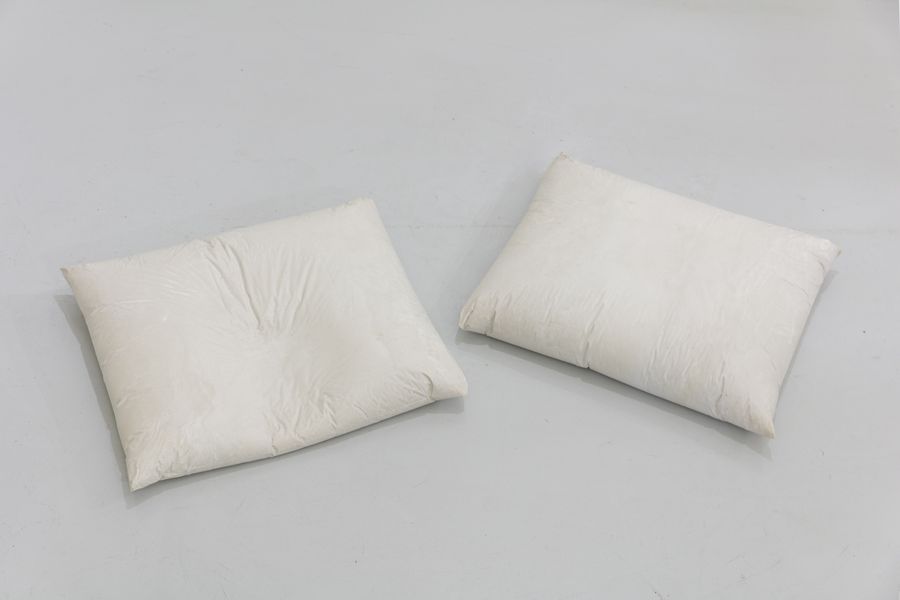
LM: Who are your literary and artistic references to create your works?
KB: During my master’s degree in fine arts, my dissertation focused on olfactory arts, which was a pioneering exploration at the University of São Paulo. This interdisciplinary exchange allowed me to bridge the gap between smells and the history of art. I found myself pondering the origins of this artistic approach and delving into the works of influential figures such as Marcel Duchamp, the surrealist exhibitions, Fluxus, and Arte Povera.
In Brazil, artists like Ernesto Neto, Lygia Clark, and Cildo Meirelss have also made significant contributions to this field. However, the biggest challenge with these references is that they rely heavily on the olfactory experience. Without the ability to smell, their impact and significance may be diminished. It is challenging to fully incorporate them into the history of art without the sensory component they require.
I often find inspiration in literature, as it allows me to explore the creation of narratives. When embarking on a new artistic work, I frequently turn to various writers and examine how they engage with smells. One notable reference is Marcel Proust, who skillfully captures and evokes the sensations associated with different scents. I find such literary explorations very compelling.
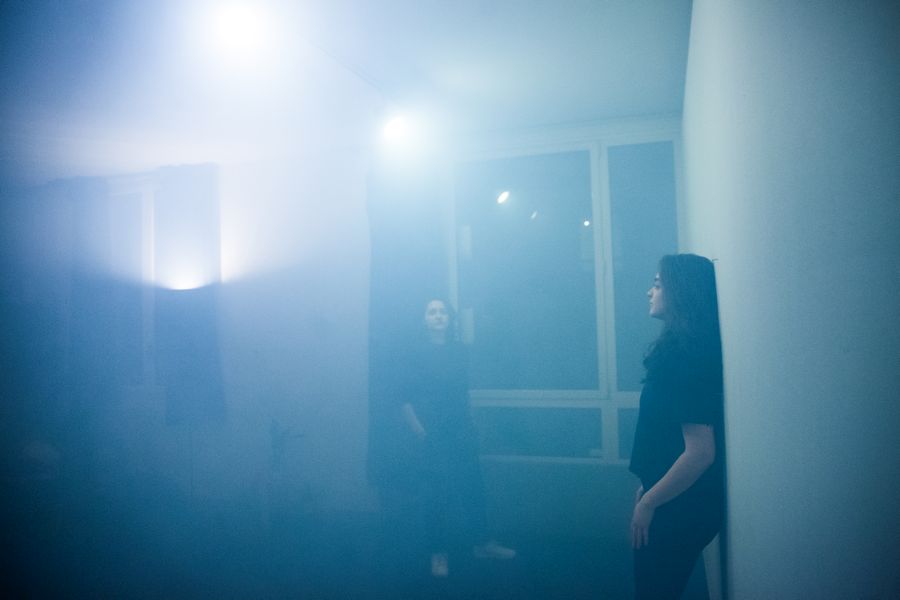
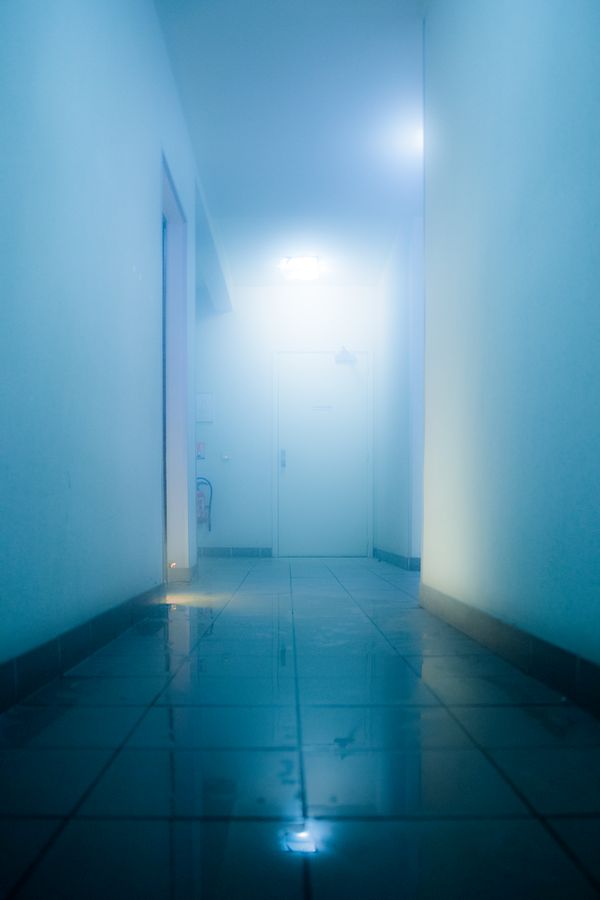
However, a significant challenge arises in translating these olfactory experiences to the audience, particularly when they are not physically present. This is where the use of text becomes crucial. Text enables me to tell stories and create an atmosphere in which the scent can complement and enhance the overall experience. It becomes a tool to convey the essence and evoke the desired response, even in the absence of direct sensory perception.
During my residency in Paris, I found myself drawn to perfume museums as a source of inspiration for presenting smells to the audience. I was intrigued by how these museums showcased fragrances and faced the challenge of effectively conveying scents. In my artistic practice, I am deeply inspired by artists who explore themes of vulnerability, death, presence, absence, and memory.
One artist who particularly resonates with me is Felix Gonzalez-Torres, especially his artwork «Untitled (Portrait of Ross in L.A.)». The concept of something fading away or disappearing holds a greater influence on me than purely political themes. It is the exploration of such circumstances that truly ignites my creativity.


Isabela Mendoza-Lamuño: Bill Gates proclaimed this era as «the era of digital senses». How do you see this new stage in our society in relation to smell? What do you think of digital odor transmissions?
KB: I am also extremely curious to see how it will evolve. A notable example is the loss of the sense of smell experienced by people during the COVID-19 pandemic, which has revealed the limited understanding we have of our own olfactory perception. Unlike our well-developed understanding of vision, represented by the precise color code of RGB, the sense of smell remains a relatively unexplored realm.
This knowledge gap can be attributed, in part, to the lack of interest in studying smell among people. This leads me to believe that achieving a digital sense of smell, where I could physically be present here (on the other side of the screen) and perceive Isabela’s scent, for instance, is still far from being realized. Initially, we might encounter some amusing experiments, such as attempts to replicate the general idea of certain smells like chocolate rather than capturing the exact aroma of a specific chocolate I have in hand on the other side of the screen. You know what I mean?
I don’t think we are quite there yet in terms of exploring a wide range of diverse perspectives on smells. However, I could be mistaken. I am genuinely curious to discover more about what Bill Gates has to say on this topic as well.
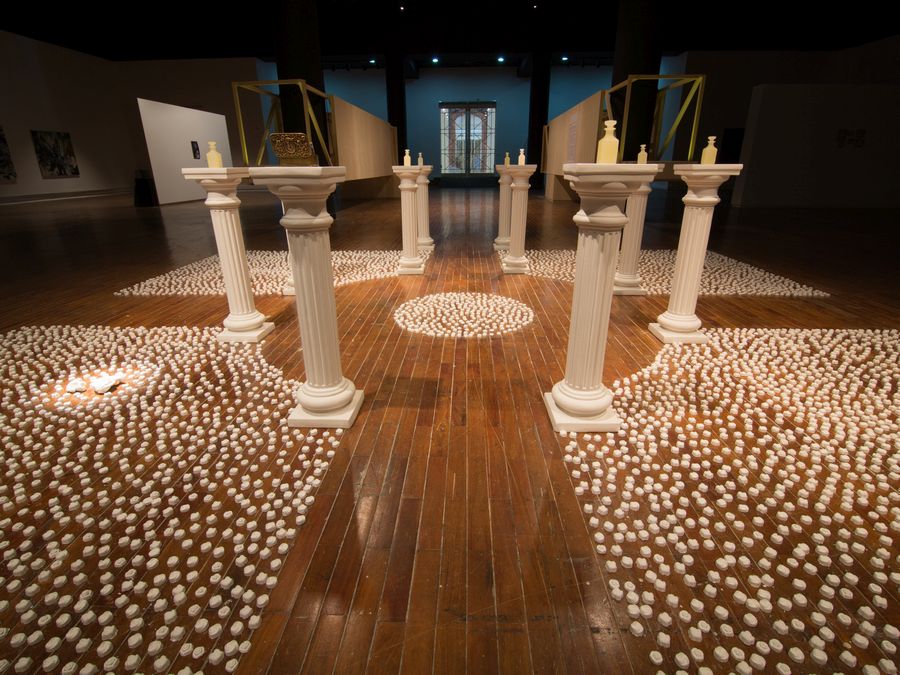

IM-L: Perfume intrinsically has to do with having a body, which registers smells through memory. What do you think of the concepts embodying, rooting, and extending associated with perfume? Why are you interested in memory in perfume?
KB: When considering perfume, it is often associated with being an accessory or a fashion detail that we wear on our bodies. Perfume has a rich history in human civilization, and it is primarily viewed as something you wear on your body. While I do sometimes explore perfumes in my work because they are connected to our experience of smells, my interest extends beyond perfumes alone.
For example, in my current project of recreating the smell of the Carnival Ball, I delve into the overall olfactory experience of entering a room during a party at a specific location. It encompasses the collective smell of the party itself. As I walk into the party, I may encounter individuals like Lucía Montúfar, who wears a particular perfume. This allows me to gain further insights into the specific bodies present at the event, most of which may be wearing perfumes. However, even if someone is not wearing perfume, our bodies still carry their own distinct scent. For instance, the fragrance of the soap we use when washing ourselves.

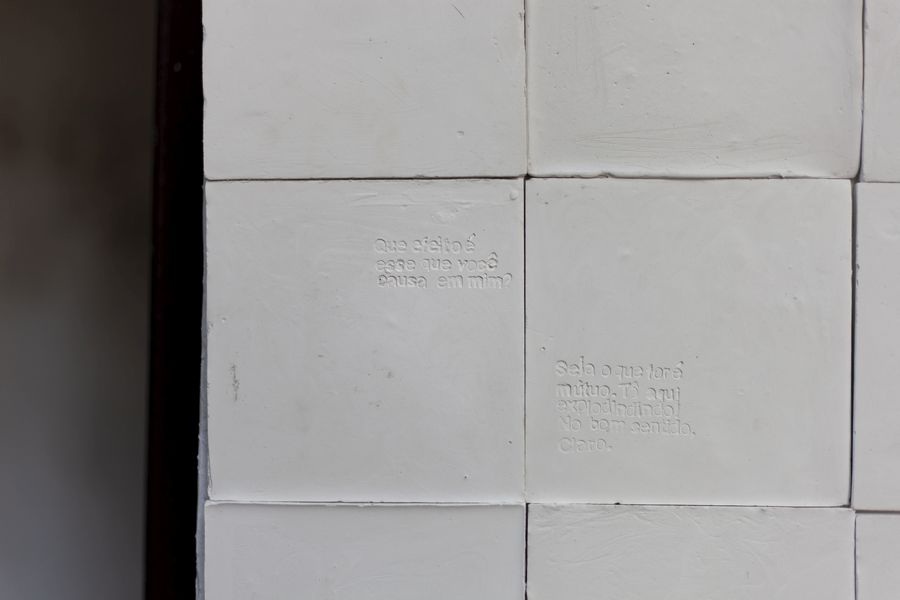
In this particular work focused on the Carnival, I utilize perfumes to represent the bodies within the space. However, I am also creating the scent of the atmosphere itself. What exactly constitutes the atmosphere? During the early 20th century Carnival, people were allowed to smoke indoors, so I incorporate notes of cigarettes. There were specific cocktails being consumed, so those notes are also present. Ether, which was legal at the time, contributes to the overall scent. I even consider the smells of sweat and urine, since they are part of the encompassing atmosphere.
However, if I were to blend all these elements together in the same fragrance, it would result in a muddy, indistinguishable scent, much like mixing various colors together. Therefore, I am intrigued by capturing the essence of the atmosphere and exploring how to recreate it.
In summary, my interest lies in the broader spectrum of smells, not solely confined to perfumes. In the case of the Carnival Ball, I am not only focusing on representing individual bodies through perfumes, but also aiming to recreate the complex scent of the atmosphere itself.
I don’t know if I answered your question…
IM-L: Yes, you answered the question, because basically what you’re doing is using all these smells to create a presence of something that was or is…
KB: There was a point in time when it existed, but it no longer does. The vehicle I use to represent those bodies is ceramics that I personally create. These ceramics are special because they have the ability to absorb the smell, allowing me to contain the scent as faithfully as possible without altering its nature.
LM: What’s the name of the ceramic?
KB: If you search for scented ceramic on Google, you might come across it. Scented ceramics are quite common in Europe, particularly in the perfume industry rather than the art world. Many perfume stores have their own scented ceramic products. So, the perfume industry does play a significant role in my work because that’s where my connections lie. However, when I tell people that I work with smells, they often mistake me for a perfumer, which I am not. I am an artist who primarily works with scents as my main medium.
[1] Han, Byung-Chul, and Joaquín Chamorro. No-Things: Bankruptcies Of Today’s World. Taurus, 2022. P.16
[2] Known as an inhalant-type drug due to its ether and chloroform components, used in the Brazilian Carnival when it was legal.
También te puede interesar
AAA – ANTHOLOGY OF ART AND ARCHITECTURE
Bergamin & Gomide and Fortes D’Aloia & Gabriel present "AAA – Anthology of Art and Architecture", an online exhibition curated by Sol Camacho, urbanist, architect, Principal at RADDAR Architecture, and Cultural Director of Instituto...
EN PRESENCIA DE LA AUSENCIA: INTERVENCIONES EN EL DESIERTO
Bajo el lema de “En presencia de la ausencia”, Desert X AlUla se situó por primera vez en tres emplazamientos del desierto de Arabia Saudita que invitaban a los visitantes a contemplar diversos paisajes...
Paulo Nazareth:melee
The Institute of Contemporary Art (ICA Miami) presents the first solo US museum exhibition for Paulo Nazareth (b. 1977). "Melee" spans Nazareth’s work across mediums, including monumental and ephemeral sculpture, photography, video, and installations....

